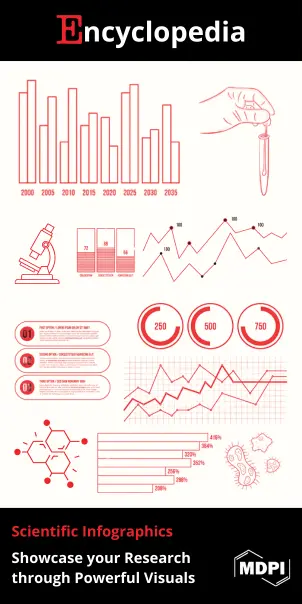You're using an outdated browser. Please upgrade to a modern browser for the best experience.

Submitted Successfully!
Thank you for your contribution! You can also upload a video entry or images related to this topic.
For video creation, please contact our Academic Video Service.
| Version | Summary | Created by | Modification | Content Size | Created at | Operation |
|---|---|---|---|---|---|---|
| 1 | Maria Antonietta Ferrara | + 1139 word(s) | 1139 | 2022-01-14 01:58:26 | | | |
| 2 | Conner Chen | Meta information modification | 1139 | 2022-02-08 01:44:55 | | | | |
| 3 | Conner Chen | + 1 word(s) | 1140 | 2022-02-08 01:45:52 | | | | |
| 4 | Conner Chen | Meta information modification | 1140 | 2022-02-08 08:33:04 | | | | |
| 5 | Conner Chen | -34 word(s) | 1106 | 2022-02-09 06:41:38 | | |
Video Upload Options
We provide professional Academic Video Service to translate complex research into visually appealing presentations. Would you like to try it?
Cite
If you have any further questions, please contact Encyclopedia Editorial Office.
Ferrara, M.A. An introduction to the Recent Advances in Nanophotonics. Encyclopedia. Available online: https://encyclopedia.pub/entry/19147 (accessed on 15 December 2025).
Ferrara MA. An introduction to the Recent Advances in Nanophotonics. Encyclopedia. Available at: https://encyclopedia.pub/entry/19147. Accessed December 15, 2025.
Ferrara, Maria Antonietta. "An introduction to the Recent Advances in Nanophotonics" Encyclopedia, https://encyclopedia.pub/entry/19147 (accessed December 15, 2025).
Ferrara, M.A. (2022, February 07). An introduction to the Recent Advances in Nanophotonics. In Encyclopedia. https://encyclopedia.pub/entry/19147
Ferrara, Maria Antonietta. "An introduction to the Recent Advances in Nanophotonics." Encyclopedia. Web. 07 February, 2022.
Copy Citation
Nanophotonics is an emerging multidisciplinary frontier of science and engineering. Its high potential in contributing to the development of many areas of technology makes nanophotonics a focus of interest for many researchers from different fields.
photonic and plasmonic nanomaterials photonic crystals
metamaterials and metasurfaces
1. Diffraction Elements
Diffractive Optical Elements (DOEs) have been expanding for many years and are a stimulant technology that allow for the redirection of redirect light using diffraction rather than refraction. When a photonic structure is realized via holography, PEOPLE refer to this as Holographic Optical Elements (HOEs), i.e., elements recorded by a specific interference pattern in a photosensitive optical material. Volume HOEs show very high diffraction efficiency in single-order diffraction; however, angular wavelength selectivity and high dispersion still are considerable challenges. In order to achieve a highly efficient HOE with low dispersion, Keshri and co-workers [1] explored a fabrication method regarding a DOE with two separate target wavelengths. Two independently sensitized layers of photopolymer were stacked and used at two different wavelengths in sequential holographic recording. The diffraction peaks of the recorded photonic structures were investigated and compared with those of the designed structures, and then, they were theoretically predicted. The device, illuminated with an expanded divergent beam at both target wavelengths and with white light, showed a strong diffracted beam. This approach could be optimized and useful for potential applications in the fields of illumination, solar collection and displays.
A diffraction grating structure was numerically simulated in the paper authored by Li and coworkers [2], where a guided-mode resonance system with a double-bar dielectric grating was exploited to achieve a multispectral electromagnetically induced transparency (EIT) effect. In this case, the resonance wavelengths of the two EIT peaks could be modified by changing the corresponding structural parameters and could be exploited for dual mode sensor, dual channel slow light, etc. When optimized, two EIT peaks showed ultra-high Q factors of 35,104 and 24,423. Moreover, the dual-mode refractive index sensor based on this system reached figures of merit (FOMs) of 571.88 and 587.42.
2. Detection, Imaging and Spectroscopy
The manipulation of light and light-matter interactions have been largely investigated for applications in the fields of detection, imaging and spectroscopy.
In the paper published by Demirer and co-workers [3], the Magneto-Optic Kerr Effect in the guided mode of an unbalanced Mach Zehnder Interferometer (MZI) was designed and simulated to optically detect the magnetization direction of ultra-thin (~12 nm) metal cladding. In fact, the device was an unbalanced MZI based on InP membrane on silicon. The MZI arms were made up of a polarization converter from one side and ferromagnetic thin-film cladding and a delay line from the other side. The device read a nanoscale memory bit (400 nm × 50 nm × 12 nm) with a signal-to-noise ratio ∼10 dB and tolerated performance reductions that arose during the fabrication. While this hybrid device based on ultra-thin metal membrane on silicon was demonstrated to be an all-optical magnetic memory reading tool, hybrid devices with an ultra-thin conductive layer jointed with semiconductors were presented by Crisci and co-authors [4], such as all-optical Schottky photodetectors that operated at room temperature. In particular, in [4], two Schottky photodetectors based on graphene/n-silicon (Si) and graphene/n-germanium (Ge) Schottky barriers were theoretically investigated and operated at 1550 nm and at 2000 nm, respectively. The responsivity/noise equivalent power (NEP) ratio was analysed, and a strong addiction on the Schottky barrier height of the junction was demonstrated. The authors derived a closed analytical formula for use in maximizing the responsivity/NEP ratio and theoretically discussed how the Schottky barrier height is related to the reverse bias applied to the junction. Moreover, they found that at 1550 nm, the optimized graphene/n-silicon (Si) Schottky PDs with a reverse bias of 0.66 V showed a responsivity and NEP of 133 mA/W and 500 fW/√Hz, respectively. Finally, at 2000 nm, the optimized graphene/n-germanium (Ge) Schottky PDs showed a responsivity and NEP of 233 mA/W and 31 pW/√Hz, respectively.
Coppola and Ferrara [5] reported a review on the state of the art of PDHI techniques, focusing on the theoretical principles and important applications. The paper not only provided an exhaustive review of applications in several fields, from biology to microelectronics and micro-photonics, but also emphasized the merits of this new technique based on the interference between different polarized optical beams. PSDHI, in fact, simultaneously allows the three-dimensional reconstruction and the quantitative evaluation of the polarization properties of a sample with a resolution on the micrometric scale, a good acquisition speed and the absence of labels/markers.
Sirleto and co-workers [6] measured the spectral resolution of SRS, i.e., the ability to distinguish closely lying resonances, and their paper focused on the spectral splitting of protein and lipid bands in the C-H region, which is of great interest in the field of biochemistry. In particular, the paper addressed the interplay among pump and Stokes bandwidth and the degree of chirp-matching. Moreover, the spectral resolution of femtosecond SRS microscopy was experimentally investigated.
Spectroscopy systems were further reviewed by Althobaiti and Al-Naib [7] in the field of instrumentation working at near-infrared NIR frequencies. The authors discussed NIR spectroscopy systems from the instrumentation point of view with regard to state-of-the-art approaches and the associated challenges. In particular, the authors provided a summary of the recent development of continuous-wave, time-domain and frequency-domain NIR systems and presented an outlook into the future of the design and development of functional near-infrared spectroscopy systems for various medical applications.
3. Optical Communications and Computing
Nonlinear waveguides can play a key role in optical communication applications, in particular in the 2 μm wavelength band, where interest in mitigating the ‘capacity crunch’ is growing. In this context, Tu and co-authors [8] fabricated and characterized silicon-rich nitride (SRN) ridge waveguides with different widths and rib heights. The structures showed a loss of ~2 dB/cm, and the SRN nonlinear refractive index was shown to be ~1.13 × 10−18 m2/W around the wavelength 1950 nm. By optimizing parameters to improve nonlinear performances for the 2 μm band, a maximal nonlinear figure of merit (i.e., the ratio of nonlinearity to loss) of 0.0804 W−1 or a super-broad FWM bandwidth of 518 nm were found. These results pave the way for high-performance on-chip nonlinear waveguides for use in optical communications in the 2 μm wavelength band.
Finally, the review proposed by Cheng and co-authors [9] underlined how the recent development of nanofabrication technologies for the generation, processing and detection of optical signals have paved the way in the field of new analog optical computing. Particular attention was given to metamaterials or metasurfaces, which offer unprecedented opportunities to arbitrarily manipulate light waves at the subwavelength scale, leading to an acceleration of the progress of wave-based spatial analog computing. Furthermore, the authors discussed challenges and future opportunities in high-efficiency signal processing by exploiting quantum behaviors.
References
- Keshri, S.; Rogers, B.; Murphy, K.; Reynolds, K.; Naydenova, I.; Martin, S. Development and Testing of a Dual-Wavelength Sensitive Photopolymer Layer for Applications in Stacking of HOE Lenses. Appl. Sci. 2021, 11, 5564.
- Li, G.; Yang, J.; Zhang, Z.; Wen, K.; Tao, Y.; Han, Y.; Zhang, Z. Double Spectral Electromagnetically Induced Transparency Based on Double-Bar Dielectric Grating and Its Sensor Application. Appl. Sci. 2020, 10, 3033.
- Demirer, F.E.; van den Bomen, C.; Lavrijsen, R.; van der Tol, J.J.G.M.; Koopmans, B. Design and Modelling of a Novel Integrated Photonic Device for Nano-Scale Magnetic Memory Reading. Appl. Sci. 2020, 10, 8267.
- Crisci, T.; Moretti, L.; Casalino, M. Theoretical Investigation of Responsivity/NEP Trade-off in NIR Graphene/Semiconductor Schottky Photodetectors Operating at Room Temperature. Appl. Sci. 2021, 11, 3398.
- Coppola, G.; Ferrara, M.A. Polarization-Sensitive Digital Holographic Imaging for Characterization of Microscopic Samples: Recent Advances and Perspectives. Appl. Sci. 2020, 10, 4520.
- Sirleto, L.; Ranjan, R.; Ferrara, M.A. Analysis of Pulses Bandwidth and Spectral Resolution in Femtosecond Stimulated Raman Scattering Microscopy. Appl. Sci. 2021, 11, 3903.
- Althobaiti, M.; Al-Naib, I. Recent Developments in Instrumentation of Functional Near-Infrared Spectroscopy Systems. Appl. Sci. 2020, 10, 6522.
- Tu, Z.; Chen, D.; Hu, H.; Gao, S.; Guan, X. Characterization and Optimal Design of Silicon-Rich Nitride Nonlinear Waveguides for 2 μm Wavelength Band. Appl. Sci. 2020, 10, 8087.
- Cheng, K.; Fan, Y.; Zhang, W.; Gong, Y.; Fei, S.; Li, H. Optical Realization of Wave-Based Analog Computing with Metamaterials. Appl. Sci. 2021, 11, 141.
More
Information
Subjects:
Optics
Contributor
MDPI registered users' name will be linked to their SciProfiles pages. To register with us, please refer to https://encyclopedia.pub/register
:
View Times:
772
Revisions:
5 times
(View History)
Update Date:
09 Feb 2022
Notice
You are not a member of the advisory board for this topic. If you want to update advisory board member profile, please contact office@encyclopedia.pub.
OK
Confirm
Only members of the Encyclopedia advisory board for this topic are allowed to note entries. Would you like to become an advisory board member of the Encyclopedia?
Yes
No
${ textCharacter }/${ maxCharacter }
Submit
Cancel
Back
Comments
${ item }
|
More
No more~
There is no comment~
${ textCharacter }/${ maxCharacter }
Submit
Cancel
${ selectedItem.replyTextCharacter }/${ selectedItem.replyMaxCharacter }
Submit
Cancel
Confirm
Are you sure to Delete?
Yes
No




